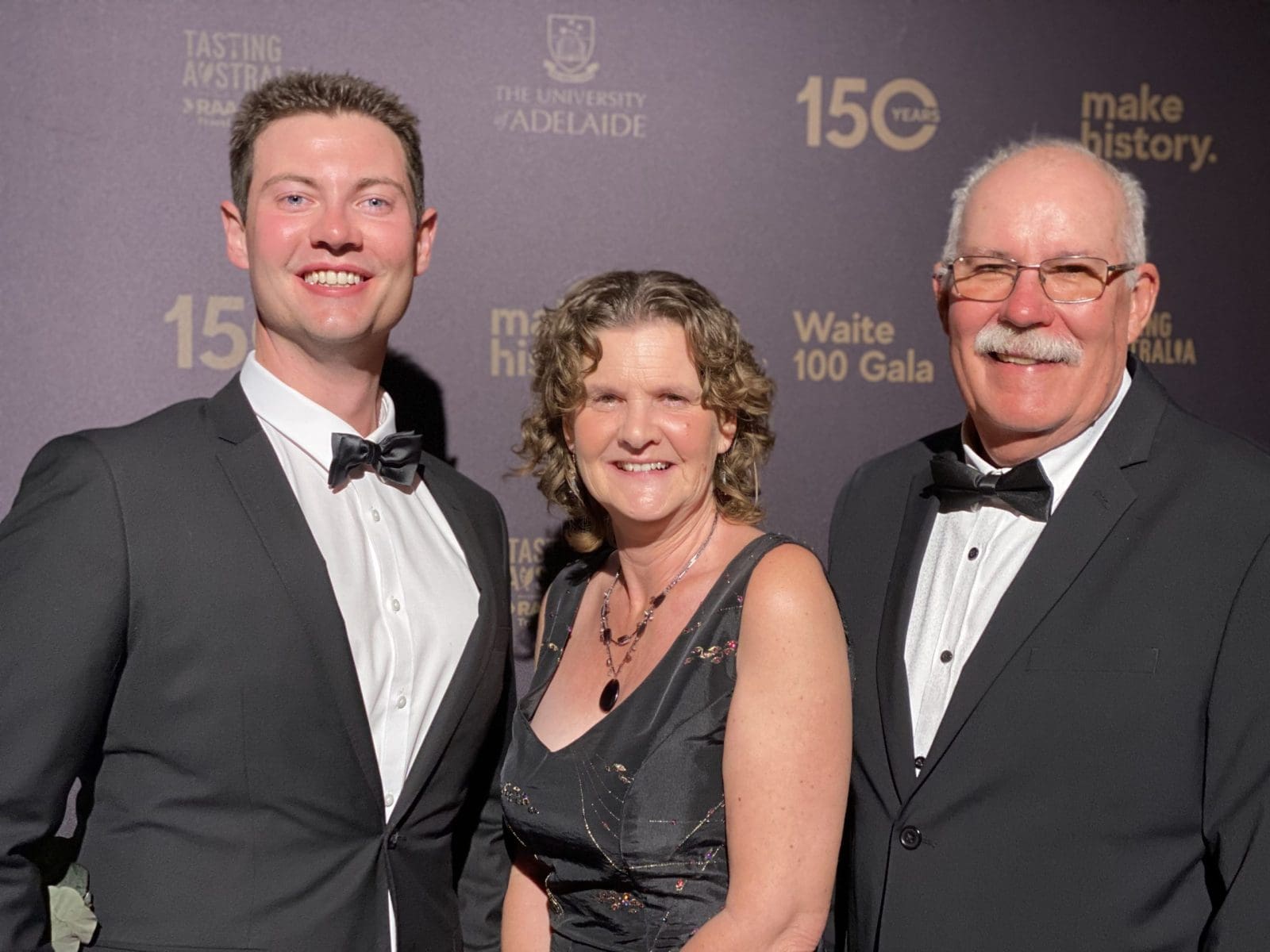
Elders’ YP AG Kadina research agronomist James Easter, Waite-based plant scientist and molecular biologist Professor Rachel Burton, and grower and former plant breeder and researcher Professor Andrew Barr, who last year received a prestigious GRDC Seed of Gold award, at the Waite 100 Gala.
THE CENTENARY of one of the Southern Hemisphere’s largest agricultural research precincts, The University of Adelaide’s Waite Campus, was celebrated on Saturday night at the Waite 100 Gala.
The event brought together past and present leading lights in grain, wine, and horticultural and agricultural research, along with industry and government representatives.
Held in the grounds of Urrbrae, the property bequeathed to the university by Peter and Matilda Waite after their passing only months apart in 1922, the event was a celebration of South Australian produce and wine.
The University of Adelaide’s Professor Jason Able head of the School of Agriculture, Food and Wine at the Waite said the campus is recognised as the largest concentration of agriculture and wine research and teaching expertise in the Southern Hemisphere.
“Waite’s enduring strength lies in its ability to bridge the gap between research and industry,” Prof Able said.
“The pioneering work undertaken during the past 100 years at the Waite campus has had a direct impact on the food and wine we all enjoy.
“From the grapes used to produce world-class wines to the ingredients that go into our favourite food products, Waite’s fingerprints are on the very foundation of Australian agriculture.”
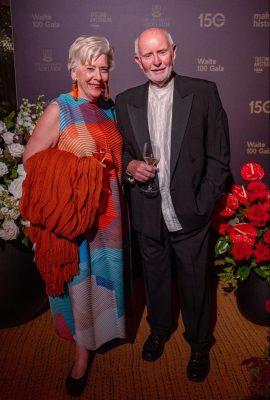
Renowned chef and champion for South Australian food and wine Maggie Beer with husband Colin Beer.
Over the years, scientists at Waite have partnered on research and development with companies like Elders, San Remo, Dilmah, Coopers Brewery, Wynns Coonawarra Estate, Yalumba, and Penfolds.
As well as performances from Teddy Tahu Rhodes and Anna Goldsworthy and cooking with commentary from celebrity chef Matt Moran, a panel discussed some of the Waite’s major contributions to agriculture over the century.
For cereal cropping in Australia and beyond, that included the Waite’s work on cereal cyst nematode (CCN), a soil-borne roundworm which routinely attacked Australian grain crops, with yield losses of 25 percent in southern regions.
Waite researchers were involved in the first report of CCN in Australia in the 1930s, and by the 1960s, pioneering researchers like Harry Wallace unveiled CCN as being responsible for yield losses.
In 1981, the university, in collaboration with institutions like the South Australian Research and Development Institute, released Galleon as the first CCN-resistant barley variety, which paved the way for a series of resistant wheat and oat varieties as well.
The upshot has been a transition to varieties resistant to CCN, enhanced this century through the incorporation of molecular markers and 3D imaging to further enhance breeding programs, and yield losses caused by CCN now down to 3pc on average.
The Waite Campus plays a major part in education as well as research, and is home to more than 800 students at undergraduate, postgraduate, masters and PhD levels in areas including agricultural sciences and development, soil science, and plant breeding.
Scholarship
Funds raised at the Waite 100 Gala contributed to the Peter Waite Centenary Scholarship for Excellence in Agriculture to support an outstanding future leader in agriculture through their PhD studies primarily in the areas of agriculture, food or wine science. Link to the Peter Waite Centenary Scholarship for Excellence in Agriculture.
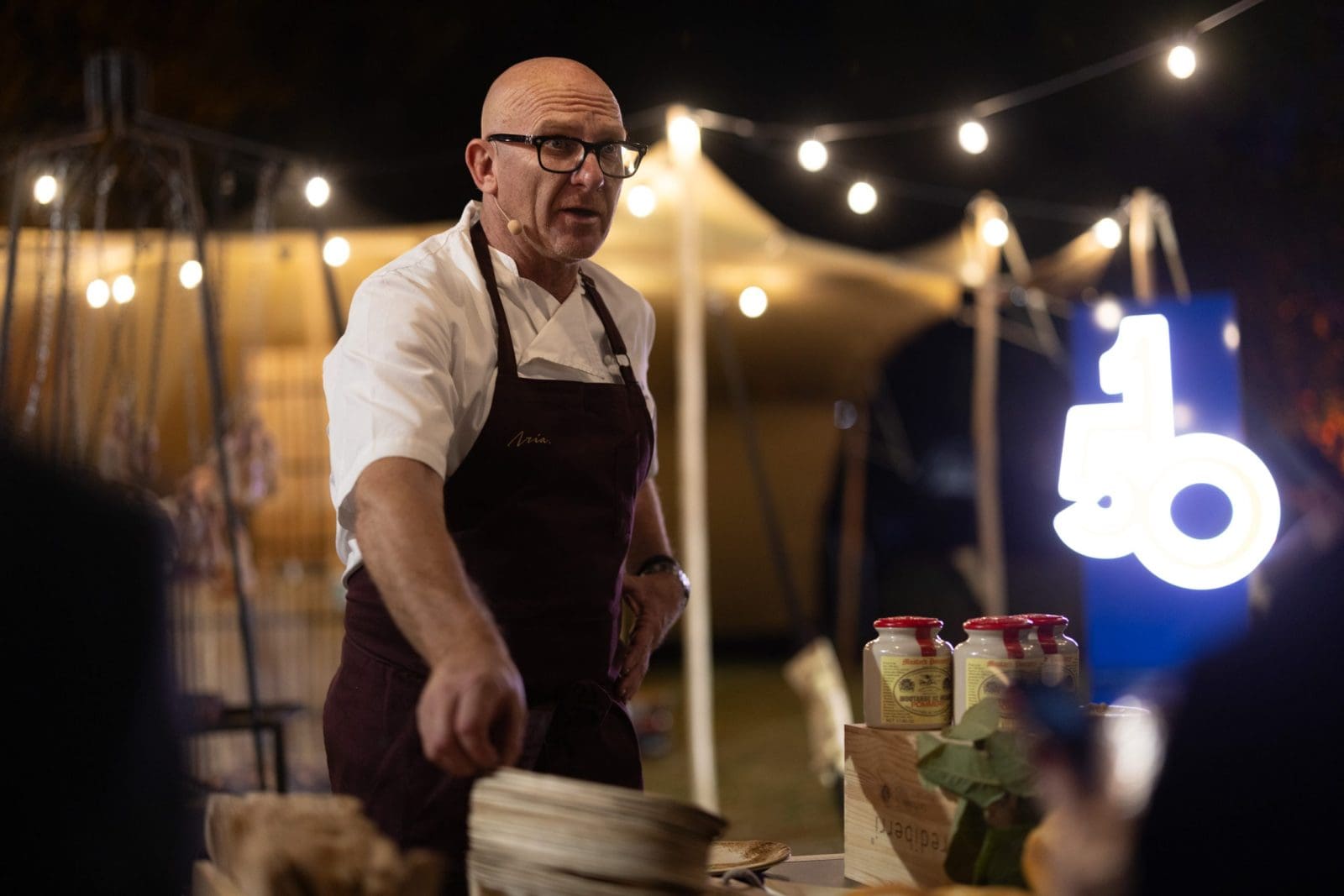
Chef Matt Moran in action at the Waite centenary event.
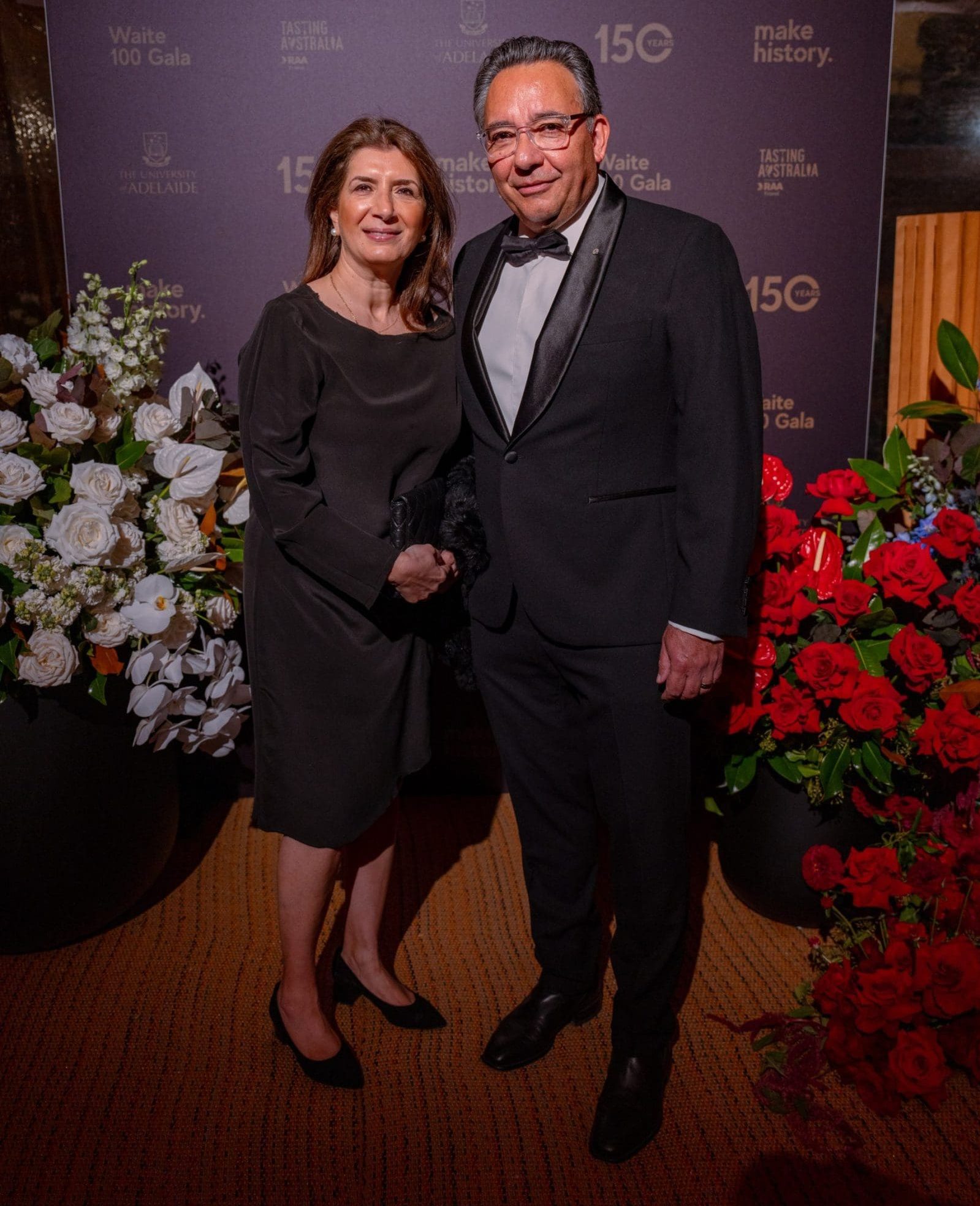
SA Department of Primary Industries and Regions chief executive Professor Mehdi Doroudi and his wife Nazi Doroudi.
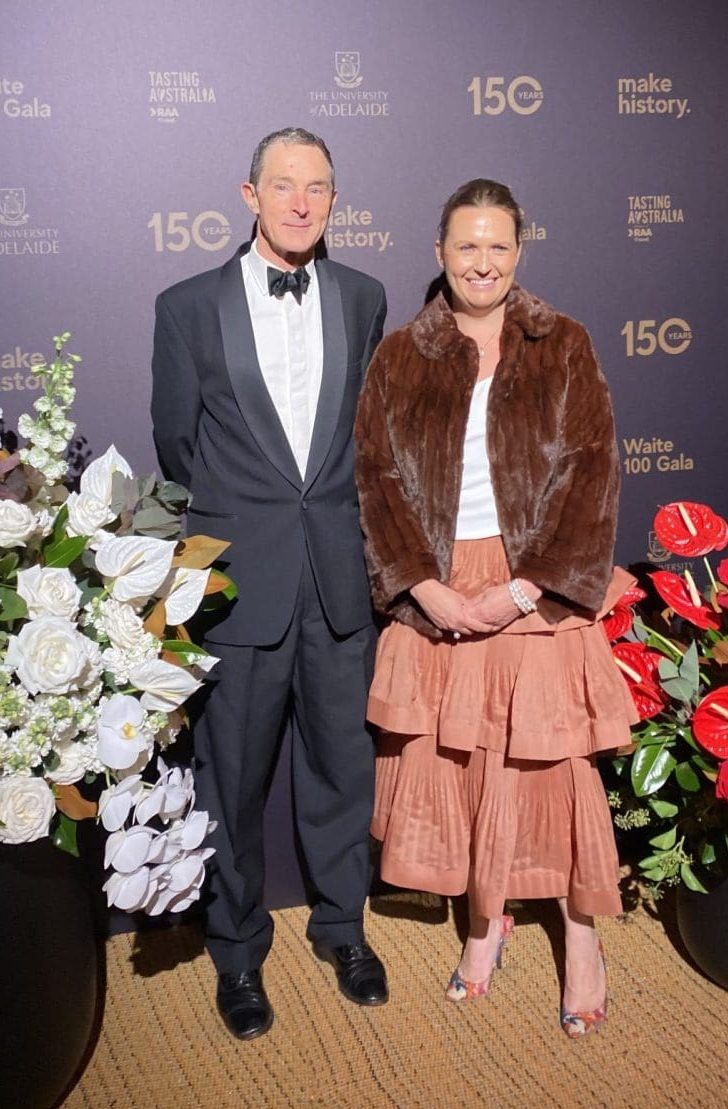
Two of Peter and Matilda Waite’s many descendants, Grain Central’s Henry Wells, Toowoomba, and Dr Adelaide Boylan, Adelaide, were at the Waite 100 Gala.
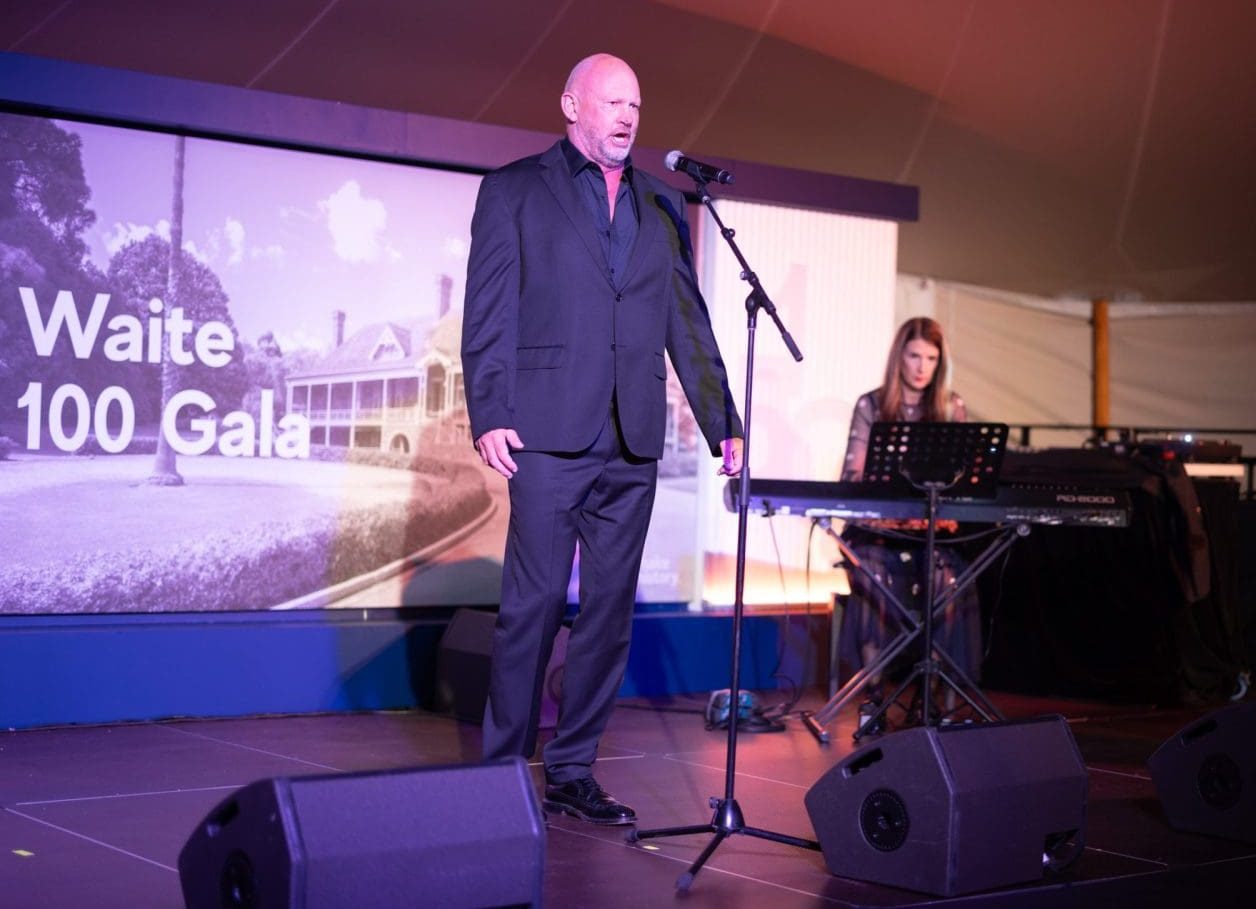
Teddy Tahu Rhodes and Anna Goldsworthy perform at the Waite 100 Gala.

A marquee in the grounds of Urrbrae, once the Waite family home, was the venue for the Waite 100 Gala.
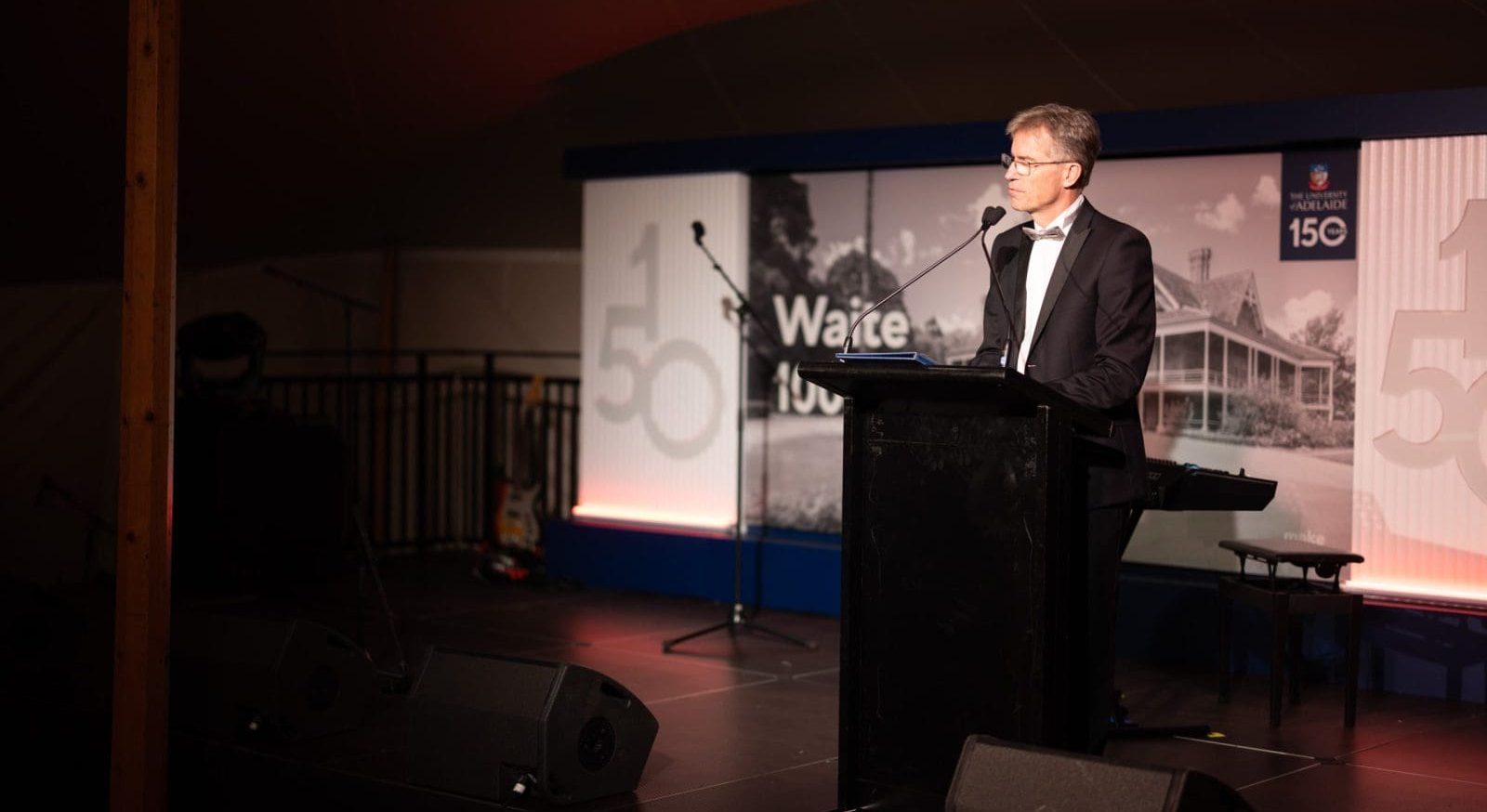
University of Adelaide vice-chancellor and president Professor Peter Høj addresses the Waite 100 Gala.

HAVE YOUR SAY